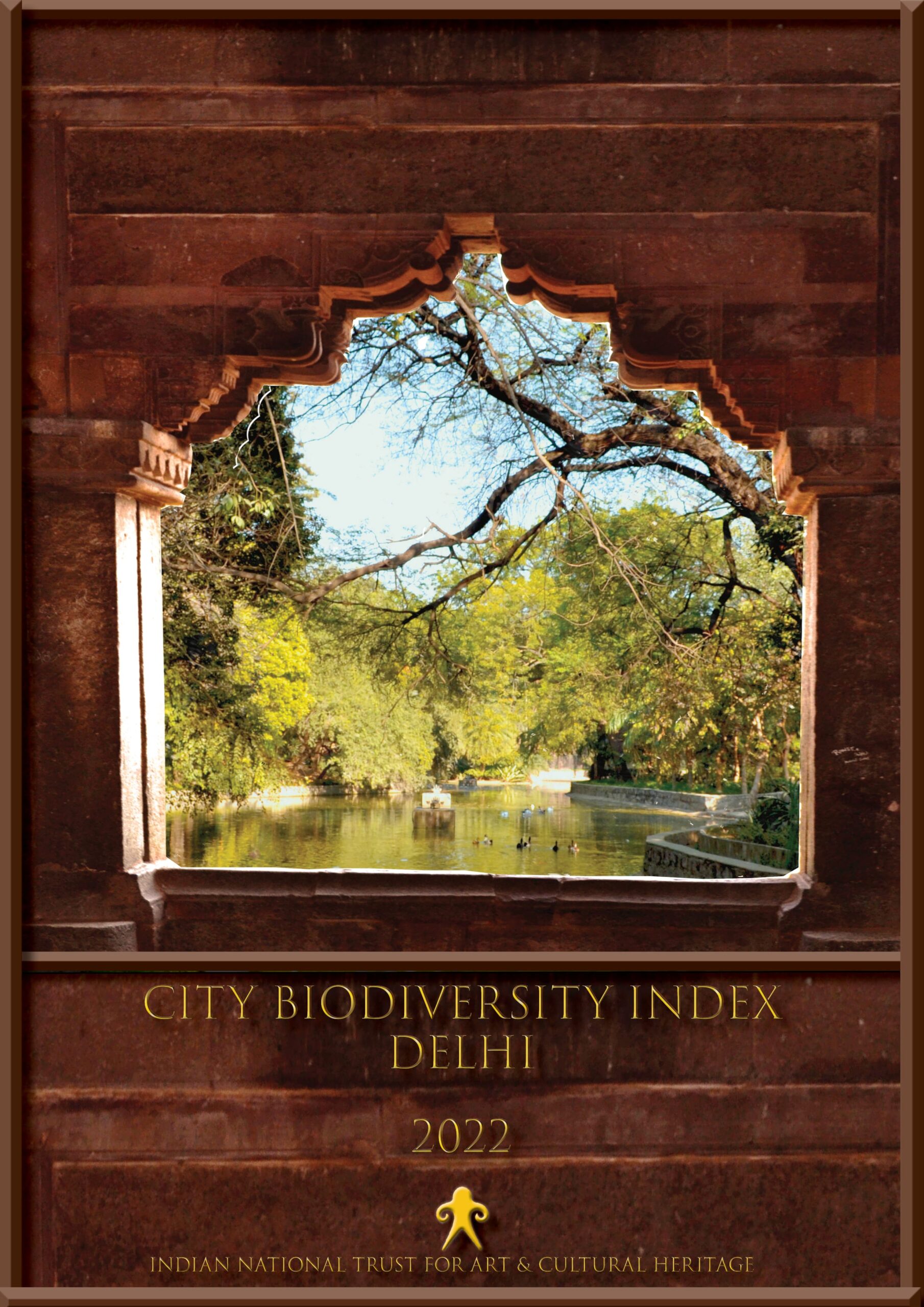Conserving Landscapes & Biodiversity Publications
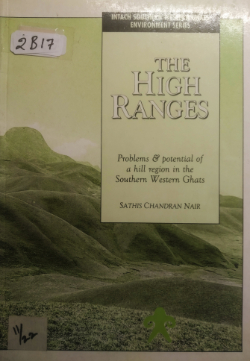
The High Ranges – Problem & Potential of a Hill Region in the Southern Western Ghats
1994
Authored by ecologist Satish Chandran Nair this monograph noted the rich biodiversity of the South-western Ghats and the potential problems likely to be posed by insensitive development. Many years later the Western Ghats have been recognized as a biodiversity hotspot with status of World Heritage Site designated by UNESCO. In that this monograph was prescient.
Delhi’s Natural Heritage
2009
“The booklet comprises of papers presented in the Symposium, ‘Delhi’s Natural Heritage’, organized jointly by INTACH and USIEF. The papers are on issues related to protection and preservation of precious and irreplaceable natural heritage. It consists of outline concrete ideas and recommendations.”
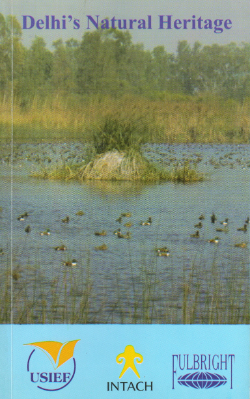
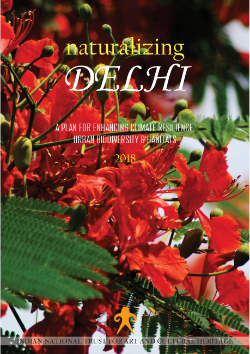
Naturalizing Delhi
2015
The landscape of NCT Delhi is transforming into a harsh urbanscape stamping out its eco-systems, leaving it increasingly unsustainable and vulnerable to climate change impacts. The strands of biodiversity, habitats, sustainability and climate change are inter-twined and operate in the context of prevailing natural conditions. Delhi is one of the greenest cities. Yet it could extract much greater eco-system services if the existing spatial format was far more naturalized. This study is an attempt to understand the natural conditions of Delhi and offers a plan to modify those conditions within the existing urban fabric to ensure greater climate change resilience and sustainability. It also offers a GIS map showing the various interventions proposed.
Naturalizing Jaipur
2017
The city of Jaipur as a whole has experienced depletion in terms of ground water, soil erosion, forests, surface water bodies, flora and fauna. Since 1975, the city has continued to expand southwards due to presence of hills on the northern and eastern edge acting as natural barriers. Jaipur’s expansion over the years has swallowed productive cropped area, fallow land and degraded forest. This study is an attempt to understand the natural conditions of Jaipur and offers a plan to modify those conditions within the existing urban fabric to ensure greater climate change resilience and sustainability. It also offers a GIS map showing the various interventions proposed
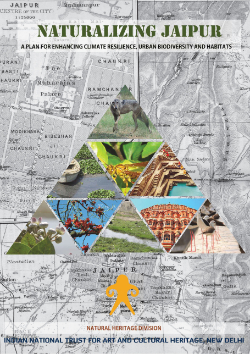
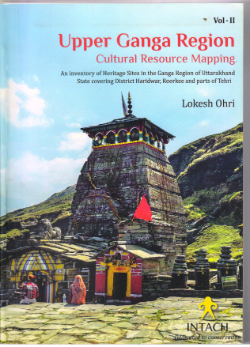
Upper Ganga Region (Cultural Resource Mapping) – Vol. I & II
2016
This publication presents the comprehensive inventory of heritage sites in the ancient towns of the Upper Ganga Region mainly comprisng of ancient temples.
An Exploratory Foray in the Upper Yamuna Region
2016
Yamuna, next only to Ganga, has been associated with the legends and traditions of Hindu dharma. Yet the Upper Yamuna Region remains comparatively underexplored and understudied. The Natural Heritage Division carried out an exploratory survey in the upper reaches of the Yamuna and Tons valley in the winter of 2012.
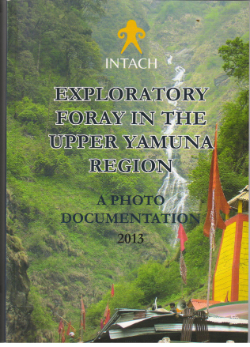
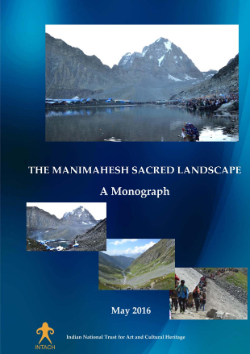
The Manimahesh Sacred Landscape
2016
The Himalayan fastnesses are studded with sacred lakes as a part of sacred landscapes associated with the deepest legends of Hinduism. Their remoteness and inaccessibility in the past, kept them privy to only the few determined and intrepid pilgrims. Overcoming the rigors of the perilious journey was part of the penance which enabled tryst with the Gods. In recent years growing accessibility as well as promotion of spiritual tourism driven by the need to develop new ‘tourism products’ has brought the fragile ecology of these sacred sites under increasing pressure and associated ugly tourism’ developments’. This monographs highlights these aspects in details while offering recommendations to balance the needs of the pilgrims with the conservation requirements of the fragile regions.
High Altitude Lakes in India Himalayas
2016
Several high altitude lakes in Uttarakhand are associated with sacred legends of the Hindus. Their remoteness and inaccessibility in the past, kept them privy to only the few intrepid travellers. In recent years growing accessibility as well as promotion of tourism driven by the need to develop new ‘tourism products’ has brought the fragile ecology of these sacred lakes under increasing pressure and associated ugly tourism’ developments’. This monographs highlights these aspects in details while offering recommendations to balance the needs of the pilgrims with the conservation requirements of the fragile regions.
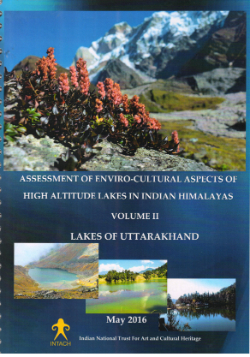
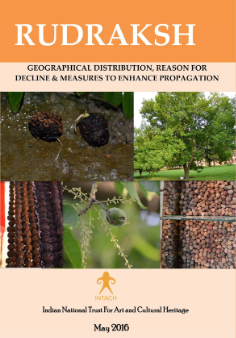
Rudraksh (Geographical Distribution, Reason for Decline & Measures to Enhance Propagation)
2016
Rudraksha- literal meaning “Shiva tears” is the seed of Elaeocarpus spp. It is also considered as a heritage tree. In modern times people from all over the world inspired by Indian Spiritualism and belief in its healing power have adopted it as sacred. Thus, demand for the bead is constantly rising, putting pressure on both cultivated as well as wild trees. This study documents the cultural, spiritual and medicinal values , mythological legends associated with the bead, issues related to natural regeneration, trade-supply, demand and presents recommendation for conservation actions.
City Biodivesity Index – Case Study of Delhi
2022
“In a rapidly urbanising world, biodiversity is increasingly under threat. Half of the world population lives today in urban centers and the interaction between biological diversity and humans occurs today mainly in the cities and as a consequence of urban lifestyle. Urban biodiversity responds to a combination of biogeographic and anthropogenic factors, where the anthropogenic activities have a stronger impact.
The City Biodiversity Index (CBI) is one of the tools that enable city administrators to manage and measure their biodiversity. The CBI assessment of NCT Delhi was undertaken as a study to benchmark the status of biodiversity and its management. According to the Secretariat for the Convention on Biological Diversity , some of the benefits that cities derived from the application of the index include a) the process facilitated capacity-building in biodiversity conservation, b) the indicators also function as biodiversity conservation guidelines, and c)assistance in setting priorities for conservation actions and budget allocation through quantitative scoring. This study will,thus, provide insights into the areas to prioritise biodiversity conservation in Delhi.
